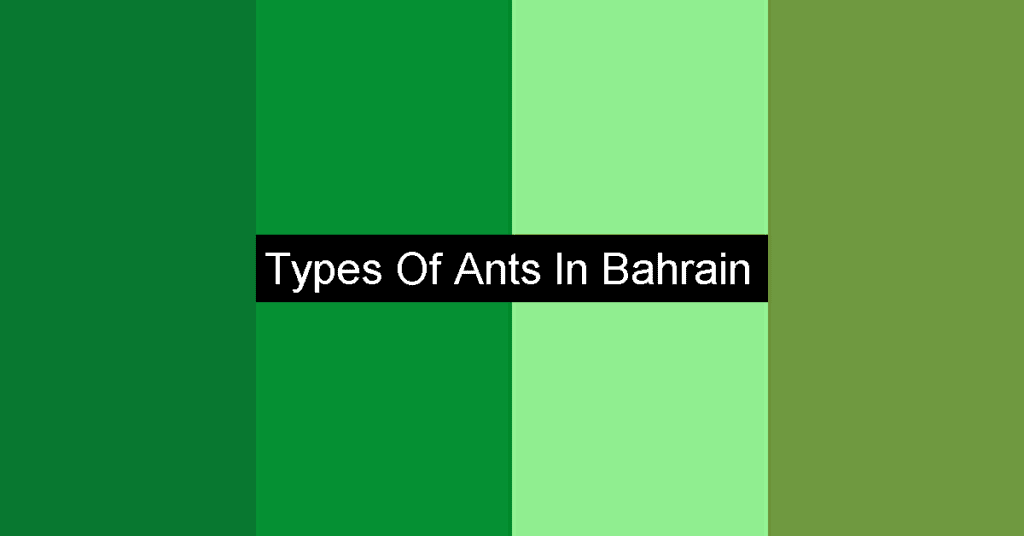Bahrain, a small island country located in the Persian Gulf region, boasts a unique environment that is home to a variety of flora and fauna. The country’s climate is classified as arid, with hot summers and mild winters.
Despite its small size, Bahrain is home to a diverse range of animal species, including desert foxes, gazelles, and various bird species. The country’s marine environment is also rich in biodiversity, with coral reefs and seagrass beds providing habitats for a variety of marine life.
The unique environment of Bahrain is a testament to the resilience of life in harsh desert conditions. .
Types Of Ants In Bahrain
The Types Of Ants In Bahrain are listed here: Army Ants, Trap-Jaw Ants, Funnel Ants, Brachyponera, Carpenter And Sugar Ants, Sneaking Ants, Acrobat Ants, Dolly Ants, Razorjaw Ants, Shield Ants, Trailing Pharaoh And Timid Ants, Mite-Eating Ants, Crazy Ants, Crazy Ants, Spiny Ants, Porthole Ants, Vampire Ants, Strongylognathus, Miniature Trap-Jaw Ants, Tapinoma, Pavement Ants.
If you’ve found some other ants in this region, contact us, and we will add them to the list!
1) Army Ants, Aenictus
Army ants are a type of ant that belong to the subfamily Dorylinae.
They are known for their aggressive behavior and their ability to form large colonies that can contain up to several million individuals.
Army ants are found in tropical and subtropical regions around the world, and they play an important role in the ecosystems where they live.
One of the most distinctive features of army ants is their nomadic lifestyle.
Unlike other ants that build permanent nests, army ants are constantly on the move, searching for food and new nesting sites.
They are also known for their impressive hunting skills.
When they come across prey, they swarm over it in large numbers, overwhelming it with their sheer numbers and powerful jaws.
Army ants are also social insects, with a complex hierarchy that determines the roles of each individual in the colony.
The queen is the largest ant in the colony and is responsible for laying eggs.
The workers are responsible for foraging, caring for the young, and defending the colony.
The soldiers are larger and have stronger jaws, which they use to protect the colony from predators.
Despite their aggressive behavior, army ants are an important part of many ecosystems.
They help to control the populations of other insects and small animals, and they provide food for larger predators such as birds and mammals.
In some cultures, army ants are even used as a source of food for humans.
Overall, army ants are fascinating creatures that have adapted to life in some of the most challenging environments on Earth.
Their nomadic lifestyle, impressive hunting skills, and complex social structure make them one of the most interesting species of ants in the world.
2) Trap-Jaw Ants, Anochetus
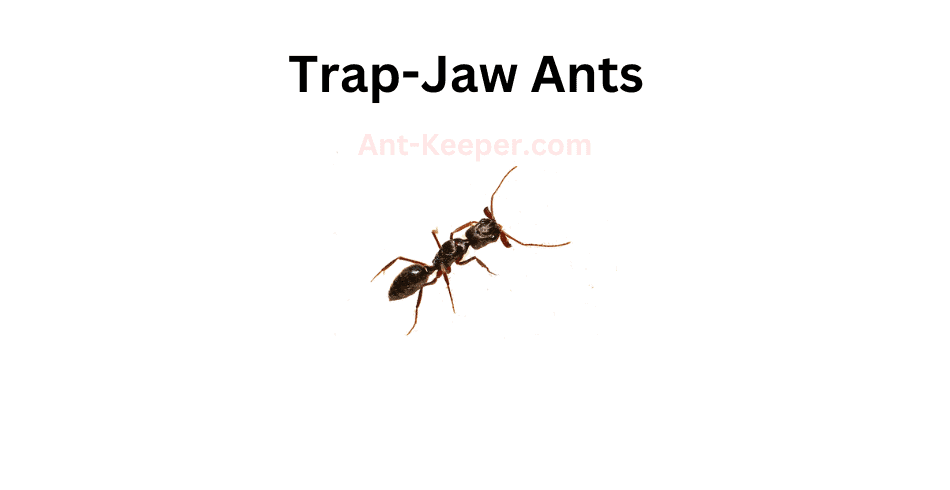
Trap-jaw ants are a species of ants that belong to the genus Odontomachus.
These ants are known for their unique and powerful mandibles, which they use to capture prey and defend their colonies.
The mandibles of trap-jaw ants are capable of closing at incredible speeds, reaching up to 140 miles per hour.
This allows them to snap their jaws shut with incredible force, which can stun or kill their prey.
Trap-jaw ants are found in a variety of habitats, including forests, grasslands, and deserts.
They are typically active during the day and are known to be highly territorial.
These ants are also known for their ability to jump, which they use to escape danger or to capture prey.
Trap-jaw ants are omnivorous, meaning that they eat both plant and animal matter.
They are known to feed on a variety of insects, including other ants, as well as nectar and other sweet substances.
These ants are also known to be scavengers, feeding on dead insects and other organic matter.
The colonies of trap-jaw ants are typically small, with only a few hundred individuals.
However, they are highly organized and have a strict social hierarchy.
The queen is the largest member of the colony and is responsible for laying eggs.
The workers, which are all female, are responsible for foraging, caring for the young, and defending the colony.
Overall, trap-jaw ants are fascinating creatures that have evolved unique adaptations to help them survive in their environments.
Their powerful mandibles and jumping abilities make them formidable predators, while their social organization allows them to work together to protect their colonies and ensure their survival.
3) Funnel Ants, Aphaenogaster
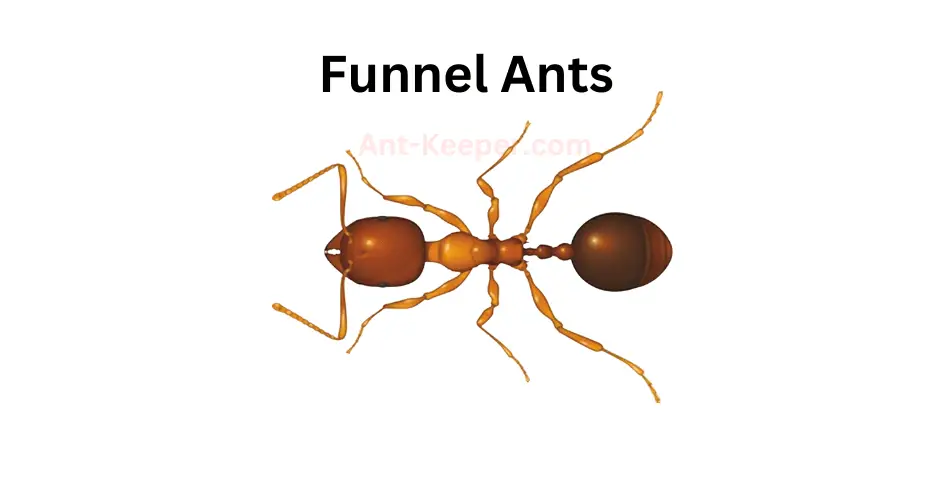
The Funnel Ants, also known as Aphaenogaster ants, are a species of ants that are commonly found in various habitats around the world.
These ants are known for their unique nesting behavior, where they construct funnel-shaped nests that are typically located in soil or leaf litter.
The Funnel Ants are relatively small in size, with workers measuring between 3-5mm in length.
They are typically reddish-brown in color and have a slender body shape.
These ants are known for their strong mandibles, which they use to collect and transport food back to their nests.
One of the most interesting aspects of the Funnel Ants is their nesting behavior.
These ants construct funnel-shaped nests that are typically located in soil or leaf litter.
The entrance to the nest is narrow and funnel-shaped, which helps to protect the colony from predators and other threats.
Inside the nest, the ants create a series of chambers and tunnels that are used for different purposes, such as storing food, caring for the brood, and housing the queen.
The Funnel Ants are omnivorous, meaning that they feed on both plant and animal matter.
They are known to collect a wide variety of food items, including seeds, insects, and other small invertebrates.
These ants are also known to tend to aphids, which they use for their honeydew secretion.
Overall, the Funnel Ants are a fascinating species of ants that are known for their unique nesting behavior and omnivorous diet.
They play an important role in their ecosystems, helping to control populations of other insects and contributing to nutrient cycling in the soil.
4) Brachyponera

Brachyponera is a genus of ants belonging to the subfamily Ponerinae.
One of the species in this genus is Brachyponera sennaarensis, commonly known as the Sennaar ant.
These ants are relatively large, measuring up to 12mm in length, and are known for their aggressive behavior.
The workers of Brachyponera sennaarensis are dark brown in color and have a shiny exoskeleton.
They have a powerful sting and are known to attack other insects and even small vertebrates.
These ants are also known to forage for food in large groups, and can quickly overwhelm their prey.
Brachyponera sennaarensis is found in a variety of habitats, including forests, grasslands, and deserts.
They are known to build their nests in soil, under rocks, and in tree trunks.
These ants are also known to be nocturnal, and are most active during the night.
Despite their aggressive behavior, Brachyponera sennaarensis is an important part of the ecosystem.
They help to control the population of other insects and play a vital role in the food chain.
However, their powerful sting and aggressive behavior make them a potential danger to humans and other animals.
5) Carpenter And Sugar Ants, Camponotus

Carpenter ants and sugar ants are two common species of ants found in many regions of the world.
Carpenter ants are known for their ability to excavate wood and create nests within it.
They are typically larger in size than sugar ants and have a black or dark brown coloration.
Carpenter ants are also known for their strong mandibles, which they use to chew through wood and other materials.
Sugar ants, on the other hand, are smaller in size and have a yellow or brown coloration.
They are named for their preference for sugary foods and are often found in kitchens and other areas where food is stored.
Sugar ants are also known for their ability to form large colonies, with thousands of individual ants working together to gather food and care for their young.
Both carpenter ants and sugar ants play important roles in their ecosystems.
Carpenter ants help to break down dead wood and other plant material, which helps to recycle nutrients back into the soil.
Sugar ants help to disperse seeds and pollinate plants, which helps to maintain healthy ecosystems.
However, both species can also be pests when they invade human homes and buildings.
Carpenter ants can cause damage to wooden structures, while sugar ants can contaminate food and be a nuisance to homeowners.
It is important to take steps to prevent ant infestations and to control them if they do occur, in order to protect both human health and the health of the environment.
6) Sneaking Ants, Cardiocondyla
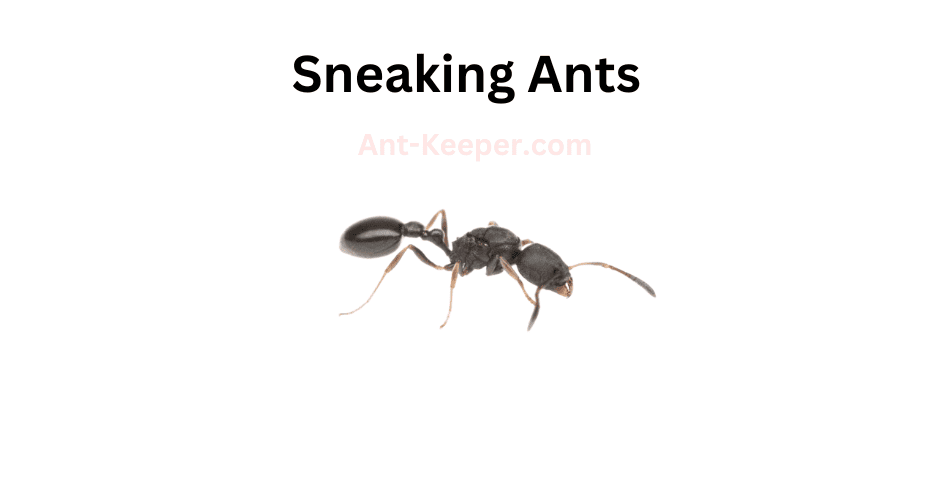
Sneaking Ants, also known as Camponotus obscuripes, are a species of ant that are commonly found in forested areas.
These ants are known for their ability to move quietly and quickly, making them difficult to detect.
Sneaking Ants are typically black or dark brown in color and range in size from 5 to 12 millimeters in length.
They have a distinctive, flattened head and a narrow waist, which helps them to navigate through tight spaces.
One of the most interesting aspects of Sneaking Ants is their behavior.
These ants are known for their ability to sneak up on other insects and steal their food.
They are also known to raid the nests of other ant species, taking their eggs and larvae back to their own colony to raise as their own.
Sneaking Ants are omnivorous, meaning they eat both plant and animal matter.
They have been observed feeding on nectar, honeydew, and small insects.
They are also known to scavenge for food, often taking advantage of the leftovers from other insects.
In terms of reproduction, Sneaking Ants have a unique system.
The colony is typically led by a single queen, who is responsible for laying eggs.
However, there are also a number of worker ants who are capable of laying eggs as well.
These eggs are typically unfertilized and produce male ants, which are used for mating purposes.
Overall, Sneaking Ants are a fascinating species with unique behaviors and adaptations.
Their ability to move quietly and quickly makes them a formidable predator, and their omnivorous diet allows them to thrive in a variety of environments.
7) Acrobat Ants, Crematogaster

Acrobat ants, also known as Crematogaster spp., are a genus of ants that are found in various parts of the world.
These ants are known for their unique ability to contort their bodies and move in acrobatic ways, hence their name.
Acrobat ants are relatively small, with workers measuring between 2-5mm in length.
They are typically brown or black in color, with a slender body and long legs.
These ants are known for their aggressive behavior and will readily defend their nests against intruders.
One of the most interesting features of acrobat ants is their ability to use their mandibles to grip onto surfaces and contort their bodies in unusual ways.
This allows them to move along narrow branches, twigs, and other surfaces that would be difficult for other ants to navigate.
They are also able to use this ability to escape from predators, such as birds and other insects.
Acrobat ants are omnivorous, meaning that they will eat both plant and animal matter.
They are known to feed on insects, nectar, and honeydew, as well as fruits and seeds.
These ants are also known to tend to aphids, protecting them from predators in exchange for the sweet honeydew that the aphids produce.
In terms of their social structure, acrobat ants are typically organized into colonies that are led by a queen.
The queen is responsible for laying eggs, while the workers are responsible for foraging, caring for the young, and defending the nest.
Overall, acrobat ants are fascinating creatures that have adapted unique abilities to survive in their environments.
Their acrobatic abilities and aggressive behavior make them a formidable force in the insect world.
8) Dolly Ants, Dolichoderus

Dolly Ants, also known as Dolichoderus spp., are a species of ant that belong to the family Formicidae.
These ants are known for their distinctive elongated heads and bodies, which give them a unique appearance compared to other ant species.
Dolly Ants are typically found in forested areas, where they build their nests in soil or under rocks.
They are known to be highly social insects, living in large colonies that can contain thousands of individuals.
Within these colonies, there is a strict division of labor, with different ants taking on specific roles such as foraging, caring for the young, and defending the colony.
One interesting aspect of Dolly Ant behavior is their use of chemical communication.
These ants use pheromones to communicate with each other, leaving trails of scent that other ants can follow to locate food sources or to find their way back to the nest.
They also use pheromones to signal danger, which can trigger a coordinated response from the colony to defend against predators.
Dolly Ants are omnivorous, feeding on a variety of foods including insects, nectar, and plant sap.
They are also known to have a mutualistic relationship with certain plant species, where they protect the plants from herbivores in exchange for a source of food.
Overall, Dolly Ants are a fascinating species of ant with unique physical and behavioral characteristics.
Their social structure and use of chemical communication make them an important subject of study for researchers interested in understanding the behavior of social insects.
9) Razorjaw Ants, Leptogenys

The Razorjaw Ant, also known as the Pachycondyla villosa, is a species of ant belonging to the subfamily Ponerinae.
These ants are known for their sharp mandibles, which are used for hunting and defense.
The workers of this species are typically around 8-10mm in length, while the queen can reach up to 15mm.
Razorjaw Ants are found in a variety of habitats, including forests, grasslands, and deserts.
They are known to be aggressive predators, feeding on a variety of insects and other arthropods.
These ants are also known to scavenge for food, and will even attack and kill other ant species to steal their food.
The nests of Razorjaw Ants are typically found in soil or leaf litter, and can be quite large.
The queen is responsible for laying eggs, and the workers are responsible for caring for the brood and maintaining the nest.
These ants are also known for their ability to defend their nest, and will aggressively attack any intruders.
Overall, the Razorjaw Ant is a fascinating species of ant known for its sharp mandibles, aggressive behavior, and impressive hunting skills.
10) Shield Ants, Meranoplus
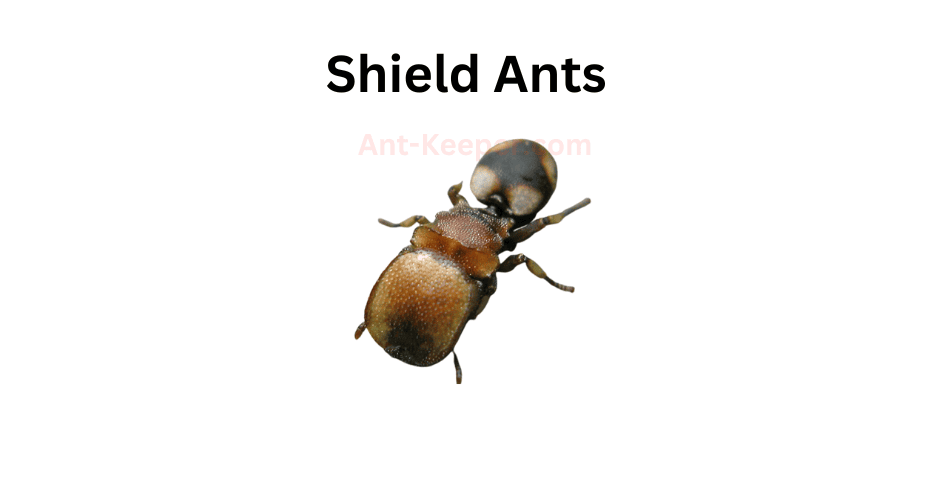
Shield ants, also known as turtle ants, are a species of ant that belong to the genus Cephalotes.
They are found in tropical regions and are known for their unique physical characteristics.
One of the most distinctive features of shield ants is their flattened, disc-shaped head.
This head shape allows them to block the entrance to their nests, protecting them from predators and other threats.
In addition, shield ants have long, spindly legs that allow them to move quickly and easily through the forest canopy.
Shield ants are social insects and live in large colonies.
They are known for their complex communication systems, which involve chemical signals and physical gestures.
They also have a division of labor within their colonies, with different ants taking on different roles such as foraging, nest building, and caring for the young.
One interesting behavior of shield ants is their use of "backpacks." Some worker ants will carry small pieces of leaves or other materials on their backs as they move through the forest.
It is believed that these backpacks may serve as camouflage or protection from predators.
Overall, shield ants are a fascinating species of ant with unique physical and behavioral adaptations that allow them to thrive in their tropical habitats.
11) Trailing Pharaoh And Timid Ants, Monomorium

The Trailing Pharaoh ant, also known as the Monomorium pharaonis, is a small, reddish-brown ant species that is commonly found in urban areas.
These ants are known for their ability to form large colonies, which can consist of thousands of individuals.
One interesting behavior of the Trailing Pharaoh ant is their tendency to trail behind other ants.
This behavior is thought to be a form of communication, as the trailing ants are able to follow the scent trail left by the leading ants.
This behavior is also used to locate food sources, as the trailing ants are able to follow the trail to the source of the food.
In contrast to the bold behavior of the Trailing Pharaoh ant, the Timid ant, also known as the Temnothorax species, is a much more cautious species.
These ants are small and brown, and are often found in wooded areas.
They are known for their timid behavior, and will often retreat into their nests when threatened.
Despite their timid nature, the Timid ant is still able to form large colonies.
They are also known for their ability to adapt to changing environments, and can be found in a variety of habitats, including forests, meadows, and even urban areas.
Overall, both the Trailing Pharaoh ant and the Timid ant are fascinating species that demonstrate unique behaviors and adaptations.
By studying these ants, scientists can gain a better understanding of the complex social behaviors and ecological roles of ants in their respective environments.
12) Mite-Eating Ants, Myrmecina

The Mite-Eating Ant, also known as the Pheidole megacephala, is a species of ant that is commonly found in tropical and subtropical regions around the world.
These ants are known for their unique feeding habits, as they primarily feed on mites and other small arthropods.
The Mite-Eating Ant is a relatively small ant, with workers measuring between 2-3mm in length.
They have a distinctive head shape, with a large and elongated head that is almost as wide as their thorax.
Their bodies are typically a reddish-brown color, with darker legs and antennae.
These ants are highly social, living in large colonies that can contain thousands of individuals.
The colonies are typically divided into two groups: workers and reproductive individuals.
The workers are responsible for foraging for food, caring for the young, and defending the colony, while the reproductive individuals are responsible for producing offspring.
One of the most interesting aspects of the Mite-Eating Ant is their feeding habits.
These ants are specialized predators, feeding almost exclusively on mites and other small arthropods.
They use their large mandibles to capture and kill their prey, and then carry it back to the colony to be consumed.
In addition to their unique feeding habits, the Mite-Eating Ant is also known for its ability to adapt to a wide range of environments.
They are able to thrive in both natural and urban environments, and can be found in a variety of habitats, including forests, grasslands, and even in homes and buildings.
Overall, the Mite-Eating Ant is a fascinating species of ant that has adapted to a unique niche in the ecosystem.
Their specialized feeding habits and ability to thrive in a variety of environments make them an important species to study and understand.
13) Crazy Ants, Nylanderia

Crazy ants, also known as Nylanderia fulva, are a species of ant that belong to the family Formicidae.
They are small in size, measuring only about 2.2 to 3 mm in length, and are reddish-brown in color.
These ants are known for their erratic and unpredictable behavior, hence the name "crazy ants."
Crazy ants are native to South America, but have since spread to other parts of the world, including North America, Asia, and Australia.
They are highly adaptable and can thrive in a variety of environments, including urban areas, forests, and grasslands.
One of the most notable characteristics of crazy ants is their ability to form large colonies with multiple queens.
This allows them to quickly establish themselves in new areas and outcompete other ant species.
Crazy ants are also known for their aggressive behavior towards other insects and animals, including humans.
In addition to their aggressive behavior, crazy ants are also known for their ability to cause damage to electrical equipment.
They are attracted to electrical currents and can easily short-circuit electronics, causing damage and potentially starting fires.
Despite their small size, crazy ants are a formidable species that can have a significant impact on their environment.
As they continue to spread to new areas, it is important to monitor their behavior and take steps to control their populations in order to minimize their impact on ecosystems and human infrastructure.
14) Crazy Ants, Paratrechina

Crazy ants, also known as Nylanderia fulva, are a species of ant that belong to the family Formicidae.
They are small in size, measuring only about 2.2 to 3 mm in length, and are reddish-brown in color.
These ants are known for their erratic and unpredictable behavior, hence the name "crazy ants."
Crazy ants are native to South America, but have since spread to other parts of the world, including North America, Asia, and Australia.
They are highly adaptable and can thrive in a variety of environments, including urban areas, forests, and grasslands.
One of the most notable characteristics of crazy ants is their ability to form large colonies with multiple queens.
This allows them to quickly establish themselves in new areas and outcompete other ant species.
Crazy ants are also known for their aggressive behavior towards other insects and animals, including humans.
In addition to their aggressive behavior, crazy ants are also known for their ability to cause damage to electrical equipment.
They are attracted to electrical currents and can easily short-circuit electronics, causing damage and potentially starting fires.
Despite their small size, crazy ants are a formidable species that can have a significant impact on their environment.
As they continue to spread to new areas, it is important to monitor their behavior and take steps to control their populations in order to minimize their impact on ecosystems and human infrastructure.
15) Spiny Ants, Polyrhachis
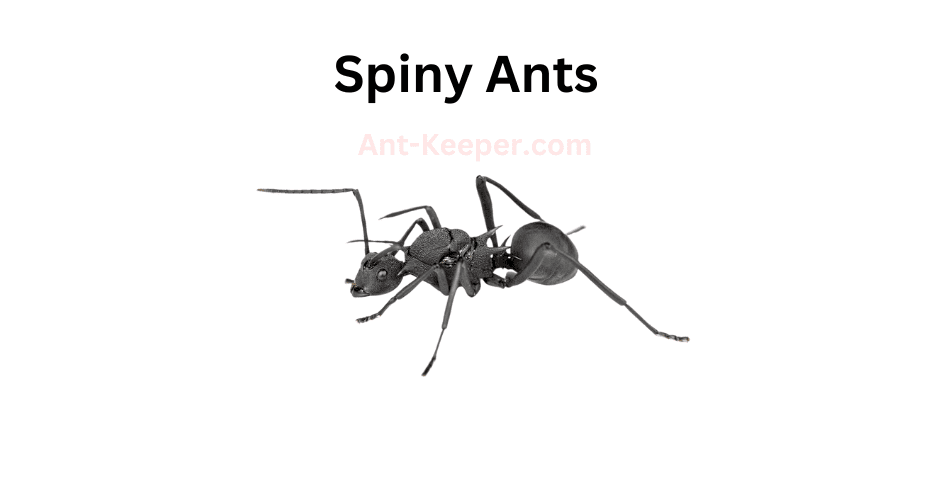
Spiny ants, also known as Polyrhachis sp., are a species of ants that belong to the family Formicidae.
These ants are known for their unique appearance, with spines covering their bodies that serve as a form of protection against predators.
Spiny ants are typically black or dark brown in color and range in size from 4 to 10 millimeters in length.
They are found in a variety of habitats, including forests, grasslands, and urban areas.
These ants are known for their aggressive behavior and will defend their nests fiercely.
Spiny ants are omnivores, feeding on a variety of food sources including insects, nectar, and honeydew.
They are also known to tend to aphids, protecting them from predators in exchange for the sweet honeydew they produce.
These ants are social insects, living in colonies that can range in size from a few dozen to several thousand individuals.
The colony is typically led by a queen ant, who is responsible for laying eggs and maintaining the colony's population.
Spiny ants play an important role in their ecosystems, serving as both predators and prey.
They help to control the populations of other insects and provide food for larger animals such as birds and reptiles.
Overall, spiny ants are a fascinating species of ants that are known for their unique appearance and aggressive behavior.
They play an important role in their ecosystems and are an important part of the natural world.
16) Porthole Ants, Ponera
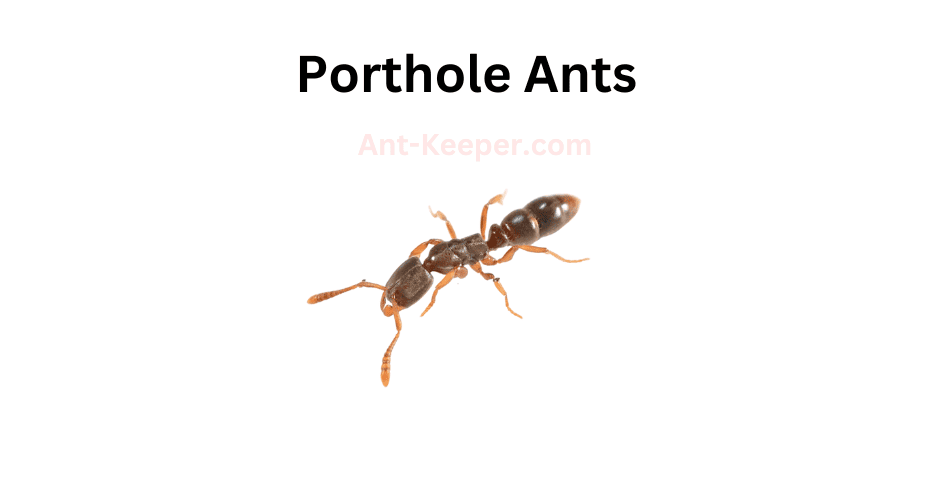
Porthole ants, also known as Temnothorax spp., are a genus of small ants that are commonly found in forested areas.
These ants are known for their unique nesting behavior, as they create their nests in small cavities or "portholes" in trees, rocks, or other natural structures.
Porthole ants are typically less than 5mm in length and have a dark brown or black coloration.
They are social insects and live in colonies that can range from a few dozen to several hundred individuals.
The colonies are typically led by a single queen, who is responsible for laying eggs and maintaining the colony's reproductive population.
One of the most interesting aspects of porthole ants is their nesting behavior.
Unlike many other ant species, porthole ants do not create large underground nests.
Instead, they seek out small cavities in natural structures and use them as their nesting sites.
These cavities can be as small as a few millimeters in diameter and are often located high up in trees or on rocky outcroppings.
Porthole ants are also known for their ability to adapt to changing environmental conditions.
They are able to quickly relocate their nests if their current nesting site becomes unsuitable due to factors such as flooding or predation.
This adaptability allows them to thrive in a variety of habitats, from temperate forests to arid deserts.
Overall, porthole ants are a fascinating and unique species of ant that have adapted to their environment in a variety of ways.
Their nesting behavior and adaptability make them an important species to study for understanding the ecology of forested areas.
17) Vampire Ants, Stigmatomma

Vampire ants, also known as blood-sucking ants, are a species of ants that feed on the blood of other insects.
These ants are known for their unique feeding behavior, which involves biting into the exoskeleton of their prey and then sucking out their blood.
Vampire ants are typically found in tropical and subtropical regions, where they live in colonies of up to several thousand individuals.
They are known for their aggressive behavior and will attack other insects, including larger prey such as grasshoppers and caterpillars.
One of the most interesting aspects of vampire ants is their ability to adapt to their environment.
In some cases, these ants have been known to feed on the blood of their own colony members when other sources of food are scarce.
Vampire ants are also known for their unique physical characteristics.
They have long, curved mandibles that are used to bite into the exoskeleton of their prey.
They also have specialized mouthparts that allow them to suck out the blood of their victims.
Despite their aggressive behavior and blood-sucking tendencies, vampire ants play an important role in their ecosystem.
They help to control the populations of other insects and contribute to the overall balance of their environment.
Overall, vampire ants are a fascinating species of ants that have adapted to their environment in unique and interesting ways.
Their behavior and physical characteristics make them a subject of interest for scientists and nature enthusiasts alike.
18) Strongylognathus

Strongylognathus is a genus of ants that belongs to the subfamily Myrmicinae.
The ants in this genus are small in size, measuring between 2 to 3 millimeters in length.
They are known for their distinctive mandibles that are long and slender, which they use to capture prey and defend their colony.
The Strongylognathus ants are typically found in forested areas, where they build their nests in soil or leaf litter.
They are known to be highly territorial and aggressive towards other ant species that invade their territory.
The ants in this genus are also known to be omnivorous, feeding on a variety of food sources including insects, nectar, and honeydew.
One of the most interesting features of the Strongylognathus ants is their ability to communicate with each other through the use of pheromones.
These chemical signals are used to mark trails, identify nestmates, and coordinate foraging activities.
The ants in this genus are also known to exhibit a high degree of social organization, with a clear division of labor among the different castes.
Overall, the Strongylognathus ants are fascinating creatures that play an important role in their ecosystem.
Their unique physical and behavioral characteristics make them a subject of interest for scientists and nature enthusiasts alike.
19) Miniature Trap-Jaw Ants, Strumigenys

The Miniature Trap-Jaw Ants, scientifically known as Odontomachus sp., are a species of ants that belong to the family Formicidae.
These ants are known for their unique and powerful mandibles, which they use to capture prey and defend their colonies.
The Miniature Trap-Jaw Ants are relatively small in size, measuring only a few millimeters in length.
They have a dark brown or black coloration and a slender body shape.
Their most distinctive feature is their mandibles, which are elongated and can snap shut with incredible force.
These mandibles are used to capture prey, crush seeds, and defend the colony against predators.
The Miniature Trap-Jaw Ants are found in a variety of habitats, including forests, grasslands, and deserts.
They are known to be active during the day and are often seen foraging for food.
These ants are omnivorous and feed on a variety of food sources, including insects, nectar, and seeds.
The Miniature Trap-Jaw Ants are social insects and live in colonies that can range in size from a few dozen to several thousand individuals.
The colony is typically led by a queen, who is responsible for laying eggs and maintaining the colony's population.
The workers are responsible for foraging, caring for the young, and defending the colony.
Overall, the Miniature Trap-Jaw Ants are fascinating insects that have evolved unique adaptations to survive in their environment.
Their powerful mandibles and social behavior make them an important part of many ecosystems.
20) Tapinoma

Tapinoma is a genus of ants that belongs to the family Formicidae.
The species Tapinoma is a small ant that measures about 2-3 mm in length.
They are commonly found in urban and suburban areas, and are known to invade homes and buildings in search of food and shelter.
Tapinoma ants are light brown in color and have a slender body with long legs.
They have a distinctively shaped head that is wider than their thorax, and they possess a pair of antennae that are bent at a right angle.
These ants are known for their ability to form large colonies, which can consist of thousands of individuals.
Tapinoma ants are omnivorous and feed on a variety of food sources, including insects, nectar, and honeydew.
They are also known to scavenge for food in garbage cans and other waste areas.
These ants are attracted to sweet and sugary substances, and will often invade kitchens and pantries in search of food.
Tapinoma ants are not known to be aggressive towards humans, but they can become a nuisance when they invade homes and buildings.
They are known to build their nests in wall voids, under floors, and in other hidden areas.
If left unchecked, these ants can cause damage to structures and can contaminate food sources.
Overall, Tapinoma ants are a common pest in many parts of the world.
While they are not harmful to humans, they can be a nuisance when they invade homes and buildings.
Proper pest control measures can help to prevent infestations and keep these ants at bay.
21) Pavement Ants, Tetramorium

Pavement ants, also known as Tetramorium caespitum, are a species of ant that belong to the family Formicidae.
These ants are commonly found in urban and suburban areas, where they build their nests in cracks and crevices in pavement, sidewalks, and buildings.
Pavement ants are small in size, measuring between 2.5 to 4 mm in length.
They are typically dark brown or black in color, with lighter colored legs and antennae.
These ants are known for their aggressive behavior and will defend their nests fiercely against intruders.
Pavement ants are omnivorous, feeding on a variety of foods including insects, seeds, and sweet substances such as honeydew and nectar.
They are also known to scavenge for food in garbage cans and other waste areas.
Pavement ants are social insects, living in colonies that can range in size from a few hundred to several thousand individuals.
The colony is typically led by a queen ant, who is responsible for laying eggs and maintaining the colony.
Pavement ants are considered a nuisance pest, as they can invade homes and buildings in search of food and shelter.
They are also known to cause damage to pavement and other structures by excavating soil and creating tunnels.
Overall, pavement ants are a common and adaptable species of ant that play an important role in urban ecosystems.
While they may be a nuisance to humans, they are an important food source for many other animals and help to maintain the balance of the ecosystem.
Check Out Some Of Our Other Ants By Location Posts
| Types Of Ants In Laos | Laos, a landlocked country in Southeast Asia, is known for its lush green forests, stunning waterfalls, and diverse wildlife. The country is situated in the ... |
| Types Of Ants In American Samoa | American Samoa, a group of islands located in the South Pacific Ocean, is a unique and diverse region with a rich natural environment. The islands ... |
| Types Of Ants In Gambia | Nestled on the western coast of Africa, Gambia is a small country that boasts a diverse range of ecosystems. From the lush mangrove swamps to ... |
| Types Of Ants In Syria | Syria, located in the Middle East region, is a country with a diverse range of environments and weather patterns. The country is home to a ... |
| Types Of Ants In Goias, Brazil | Nestled in the heart of Brazil’s central-western region lies the state of Goiás, a land of diverse landscapes and unique wildlife. With a tropical savanna ... |
